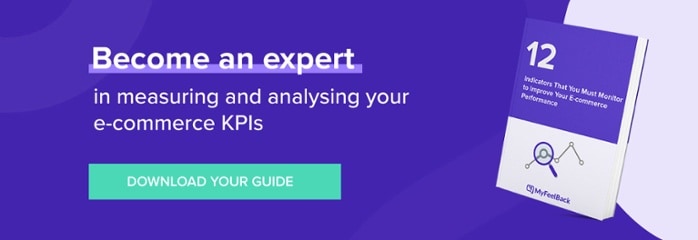So, your products just aren’t selling. Frustrating, isn’t it? Your e-commerce store is seeing lots of traffic but, for some reason, people still aren’t clicking on the buy now button. Your online traffic simply isn’t converting into sales.
The reasons for why this is happening are often a mystery to e-commerce businesses. And even though no business can force a customer to complete a purchase, they can certainly do their best to minimize unnecessary drop offs. Here is an overview of 5 common problems which may be deterring your online visitors from making a purchase on your e-commerce website and how smart surveys can help you gather the knowledge you need to improve your conversion rates.
Potential Problem: You are not communicating a clear value proposition
Consider Asking:
- What brings you here today?
- For what purposes have you used us before?
Rationale:
You want to understand what motivates people to visit your e-commerce site and, even, prioritize the reasons. Having a clearer understanding of what motivates visitors to click on your site could provide valuable insights to help you strengthen or strategize your business. For example, maybe your site is seeing a lot of traffic but experiencing low conversions. This might be due to visitors who are price-comparing, customers who appreciate your product or service but will go with a competitor who offers the same thing at a lower cost.
To truly understand and appreciate what value your company’s products or services provide customers, it’s a very good idea to understand where your customers are coming from. Rebecca O. Bagley, contributing writer for Forbes, observes how, generally speaking, all companies deliver value in cost, technology, or service, but rarely all three. Focusing on which of these categories your company falls into will better position you to focus on and increase your business’s main strengths.
Many new e-commerce businesses make the mistake of thinking that they “have to try to compete on all three fronts” which often tends to “weaken their position in the marketplace,” according to Nicole Paolozzi of Bush Consulting Group. Paolozzi points out that businesses are often relieved “when they realize they can or should build their value proposition statements on what they do best”, a process which begins with talking to customers to find out what they think is most interesting about your product or service.
Potential Problem: You aren’t attracting the right traffic
Consider Asking:
- Where do you live?
- What is your age?
- How often do you use our product or service?
- How much money do you spend monthly on our product or service?
- How did you find us?
Rationale:
- Looking at visitors demographics, in addition to buying data, will help you develop a strong picture of who your most valuable customers are. And finding out what each visitor’s intent is when he or she visits your site will help you understand if you are reasonably able to meet all of their needs.
Once you understand what tasks and information your buyers are seeking from your site, you’ll be better positioned to understand (1) how customers find out about your ecommerce site, (2) who your most valuable customers are, (3) where you can attract the right kind of customers, and (4) how you can optimize your website navigation for more conversions.
Robert Simons, a contributing writer for Harvard Business Review, highlights the importance of understanding who your most valuable customers are. But he also points out that, to build a successful e-commerce business, you must know who you are, who you are not, and whether your visitors’ needs and values match yours. Unfortunately, “the entrepreneurial landscape is littered with the carcasses of companies that tried to be everything to everyone”, one of the biggest mistakes a business can make.
Surveying customers to find out who they are and what they are looking for will help you streamline your marketing, attract relevant customers, and increase conversions.
Potential Problem: You are ignoring mobile
Consider Asking:
- Is our content easy to read?
- Is our site easy to navigate?
- How would you rate your user experience?
Rationale:
Mobile users have different objectives than desktop users; often, they are looking for quick, easy, bite-sized information. Customers report that their mobile purchases are often impulse buys, with some statistics showing that mobile users spend more money per purchase than customers do on desktop websites. This only underscores the importance of optimizing your mobile experience to match a visitor’s needs and behaviors in the context of how they will most likely be browsing your website. By making the path to purchase or inquiry simple and intuitive, you’ll align more precisely with mobile users who need information rapidly to make quick decisions.
But, first, you must find out how well you are meeting your visitors expectations, an undertaking well worth your time and effort. In reality, if you are not optimizing your mobile experience, you are losing sales. Research shows that 57 percent of mobile users will abandon your website if it takes more than 3 seconds to load and 30 percent will abandon a purchase transaction if the shopping cart isn’t optimized for mobile devices. Considering how important mobile is for your e-commerce business, it should seem only natural that you are taking the time to optimize your mobile experience.
You can’t afford to ignore that mobile has overtaken desktop usage, and is now responsible for producing more sales. And if you can’t provide what visitors need when they need it, you will have lost the opportunity for a sale and risk losing a customer permanently to a competitor.
Check in with your customers. Make sure you are producing an online experience that is appealing to them.
Potential Problem: You are not letting your customers serve themselves
Consider Asking:
- Were you able to complete your task today?
- Did you find everything you were looking for?
- How can we improve our website to ensure easier completion of your task?
Rationale:
Questions about user experience will give insights into the usability of your online platforms and how to improve their effectiveness so that visitors can more easily complete tasks and find the information they are looking for. It’s never a good idea to just assume that customers experienced no trouble while visiting your site, especially when evidence shows that 96% of unhappy customers never complain; instead, 91% of them will simply leave and never come back.
Considering that a customer is 4 times more likely to defect to a competitor if they experience a service-related problem than they are with a price- or product-related problem, your business simply cannot afford to take you customers needs for granted. According to Bain and Company research, “customers who have a bad customer service experience are even more likely to churn than those who are unhappy with prices”, including, even, longtime customers. Instead of guessing whether or not customers were able to find the information they were looking for, just ask them. If their feedback sparks even one small website improvement, this could reduce churn and make a big difference in the number of completions you see.
Potential Problem: You are not including a call-to-action
Consider Asking:
- Repeat Customers: How likely are you to recommend us to friends or colleagues?
- New Customers: How satisfied are you with your purchase of [specify product or service]? How was your experience?
- Non-Customers: What prevented you from completing your purchase of [specify product or service]?
Rationale:
If visitors don’t click, they don’t buy, which is why conversions rely on clear calls-to-action. There are many ways to get your online visitors to do something, one of which is asking them to respond to a quick, relevant question about their experience. Optimizing your site’s call-to-action button with a simple feedback question like those above not only promotes more clicks but also provides relevant information to help you grow your business.
No matter who you are asking, make sure that your question serves an actual purpose, that it is delivered with a real commitment to take action to change and improve your business’s e-commerce experience. If customers see no value in offering you their opinion, they won’t. You can even make the intent obvious by first stating something like, “We want to know what’s important to you when it comes to X which is why we are asking for your opinion.” Link your feedback questions to specific moments in the customer’s online journey and make their responses part of your everyday business practice. And don’t forget to explain to your customers why you are asking for their feedback.
Providing visitors with clear, relevant calls-to-action on your e-commerce site plays a major role in converting window shoppers into purchasing customers. And, keep in mind, asking readers to buy today isn’t always the right option. An estimated 96% of first-time visitors to your website aren’t ready to buy. Using your call-to-action to generate leads can allow you to keep in contact with these prospects as they consider a purchase.
Putting Your Feedback Into Action
After you have collected and analyzed your data, you should have a clearer idea of what you need to improve on and what you could be doing to fine-tune your business. And, if you end up implementing changes inspired by the results of your survey, let your customers know. They’ll appreciate that their opinions have not only been heard, but also used to make things better.
With well-crafted survey questions, you’ll understand what you need to do to ensure an easy-to-use, user-friendly, and relevant online experience for your customers. Conducting surveys and getting feedback from customers will go a long way in helping you understand what customers are thinking, how they feel about your product or service, and what you need to do to change your online strategy to boost sales.



















